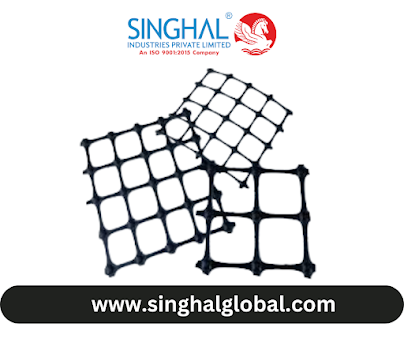Canal Lining and Its uses in Farming
Canal lining is a technique used to protect and maintain the integrity of large water supply canals. This method of construction involves the installation of a specialized impermeable material along a canal wall, offering numerous benefits compared to traditional techniques. Learn more about the advantages and uses of canal lining, and how it's helping farmers ensure their farms have sufficient water supply!
What is Canal Lining?
Canal lining is a type of construction that involves the installation of impermeable material along a canal wall. The material can range from synthetic liners to tar-based coating systems, but the one constant is their ability to protect and maintain the integrity of canals used for water supply. Canal lining has been in use since ancient times and it continues to play a key role in ensuring our crops are able to get the water they need.
Why Use Canal Lining?
Canal lining offers many benefits to farmers, including improved irrigation and water conservation. Its main advantage is its impermeability, meaning it prevents water from seeping out of the canal walls. This ensures that any water sources are replenished with clean, fresh water and reduces the costs associated with manual maintenance and cleaning. In addition, canal lining can reduce erosion of the canal walls, which may help protect adjacent land and limit weed infestations along the wetlands.
Where Can I Find Appropriate Canal Liners?
The type of liner you choose for your canal will be dependent on the size, shape, and material of the canal wall you are lining. When it comes to selecting the most appropriate liner, many farmers turn to specialist suppliers who can provide a variety of customizable materials that meet specific agricultural needs. These materials include asphalt, concrete, rubber, and coated fabric which are all designed to waterproof and protect canals from leakage and help improve water management.
How to Install a Canal Liner?
Installing a canal liner is a complex task that should usually be undertaken by an experienced professional. The first step is excavating and preparing the canal to accept the liner you have chosen, which may involve the handling of heavy and awkward materials. In some cases, it may also be necessary to reinforce the soil walls using suitable fabrics or geotextiles where necessary. Once this has been done, the liner can then be installed, securely attached in place and finally inspected for any signs of damage or leaks before use.
What Maintenance Is Required for Canal Lining?
Taking care of a canal liner can extend its lifespan significantly and minimize the risk of future damage. Once the canal is lined, regular inspection is necessary to ensure that all fittings remain secure, as well as to check for any signs of leakage or deterioration in the liner. Tactile inspection should be performed regularly and any issues rectified immediately in order to maintain optimum performance and safety. Additionally, it may be necessary to remove sediment build-up or vegetation from time to time in order to retain adequate functionality.
.jpeg)

.png)
Comments
Post a Comment